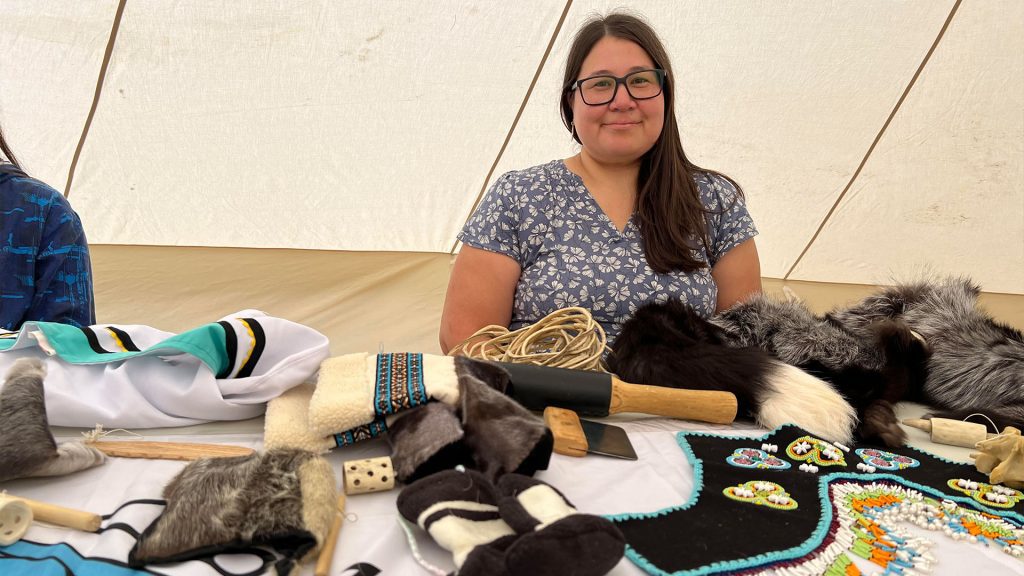
Communications manager for Tungasuvvingat Inuit, Eleanor Partridge at an Tungasuvvigat Inuit event in Ottawa for National Indigenous Peoples Day. 2024. Photo: Kerry Slack/APTN
Annie Pootoogook Park in Ottawa filled up quickly on National Indigenous Peoples Day to showcase the culture and traditions of Inuit within an urban setting.
Organized by Tungasuvvigat Inuit (TI)—an Inuit-specific urban service provider in Ottawa – that provides programs and services to help Inuit navigate urban systems. They have childcare, a food bank, and help Inuit feel a sense of belonging in a place far from home.
“We’re there for you as you build your life in the south and work to keep you connected to your culture in the north,” says their website.
The gathering commemorated the revered Inuit artist Annie Pootoogook but also provided a platform for cultural exchange and community strengthening.
“We decided to have our own event because we wanted to represent Inuit for National Indigenous Peoples Day,” said Eleanor Partridge, manager of communications for TI. “We have a large population in Ottawa, we wanted to have a celebration for them, including everyone else, of course.”
Traditional and modern
The event was a blend of traditional and modern aspects of Inuit life, featuring crafts that utilize traditional materials like caribou antler and cultural practices such as throat singing and Inuit games.
The offering of “country food” such as caribou, muktuk and arctic char delighted attendees with traditional foods of the Inuit.
“I’m most looking forward to the food today, can you smell that? I can’t wait,” said artist and vendor Joey Nakoolak.
The significance of hosting the event in a park named after Pootoogook was to pay homage to an artist who captured the essence of contemporary Inuit life.
“We wanted to have it in this location because of the significance of Annie Pootoogook who was an Inuit artist but it’s also close to where most Inuit live in Ottawa,” said Partridge.
Contemporary life
Pootoogook, who died in 2016, is known for her graphic artwork depicting contemporary life in the North. Her art covered a wide range of topics, but she often depicted everyday images and scenes, such as shopping or watching TV.
In addition, the presence of Inuit artists like Joey Nakoolak showed the importance of cultural representation and the opportunity for Inuit creators to share their works, grounded in their environmental and cultural heritage, with broader audiences.
Originally from Coral Harbour, Nunavut, Nakoolak has been living in Ottawa for seven years.
“Today I’m here with ivory carvings, most of the art I do is based on my culture, my culture, our tools and the environment. A lot of the art I have right now is ivory and baleen (whale). At the moment a lot of my art is jewelry.
“It’s important to have an Inuit event because each community has a different culture and styles,” he said.
Distinctiveness
Nakoolak’s emphasis on the distinctiveness of each Inuit community’s culture, tools and practices captures the diversity within the collective Inuit identity and the value of recognizing and celebrating these differences.
“We are all from the northern community but there are differences in the communities daily living, many of the tools we use and the creatures we hunt are the same but slightly different. They all have their own meanings, and unique qualities as communities,” said Nakoolak.
According to Nakoolak and Partridge, the event helped foster a sense of belonging among urban Inuit.
By bringing together Inuit community members and friends in celebration, such initiatives not only honor their traditions but also educate and enrich the wider community, fostering inclusivity and mutual respect.









